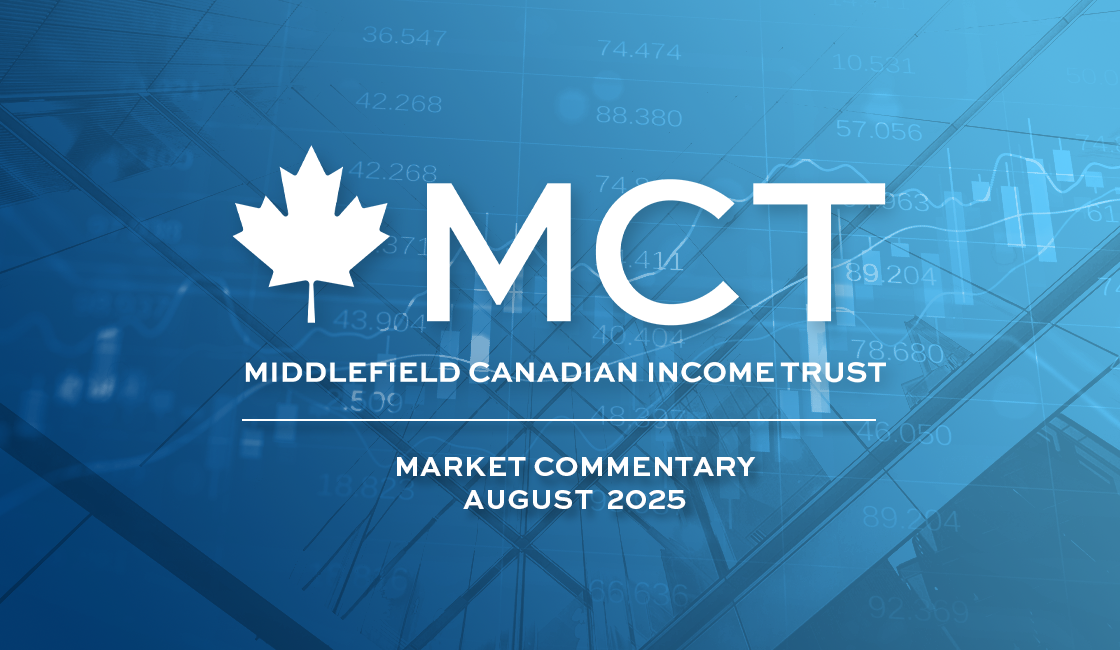Markets extended their gains in August, maintaining the steady momentum seen since early April. Canadian equities have delivered solid returns over this period as market broadening continues. In British pounds, the Fund’s NAV returned 0.9% in August compared with a 2.5% gain for the Benchmark.
One of the main drivers of increased demand for Canadian equities has been an improved regulatory and infrastructure policy backdrop. In September, Prime Minister Carney announced the first phase of his nation-building agenda, fast-tracking five large projects under the new Major Projects Office of the Building Canada Act. The initial list is aimed at multiple sectors, including an expansion of LNG Canada, a Nuclear Project, an expansion at the Port of Montréal, a copper project in Saskatchewan, and the Red Chris mine expansion in B.C. Together, these projects are expected to generate roughly $60 billion in economic activity. PM Carney framed the plan as a step toward reducing interprovincial barriers and streamlining the approvals process for projects of national interest. Future priorities include high-speed rail, critical-minerals infrastructure, northern port upgrades and carbon capture and storage via the Pathways Alliance.
Deal activity in Canada has accelerated against this backdrop, underscoring renewed corporate confidence. We have seen several high-profile transactions across multiple sectors including financials, energy, mining and real estate. Most recently, Anglo American announced the acquisition of Teck Resources in a deal valued at more than $50 billion – one of the biggest mining transactions in over a decade. This transaction will keep the head office of the combined company in Vancouver and is emblematic of the return of strategic buyers to Canada. This surge in M&A not only validates undervalued assets but also serves as a healthy catalyst for capital recycling and future market performance.
Canadian banks reported fiscal Q3 results in late August, with the group delivering an average EPS beat of 8% and driving consensus estimates nearly 3% higher. Results were supported by lower-than-expected credit loss provisions and ongoing net interest margin (NIM) expansion. With the short end of the yield curve expected to decline in the months ahead as central banks cut rates, NIMs could expand further. We see the greatest earnings revision potential at TD and BMO, both MCT core holdings and which also benefit from sizeable U.S. businesses.
REITs delivered another strong month of performance, generating total returns of 3.8% in Canada. Results from the Q2 earnings season were solid, with 90% of Canadian REITs reporting results that were in-line or above expectations. This strength has started to attract more investor attention, with many of our real estate positions up more than 10% year-to-date. Even so, we continue to see significant runway for further outperformance as fundamentals remain supportive and valuations compelling. As a result, the Fund maintains its overweight exposure to the sector.
Canada’s oil sands producers, including Canadian Natural Resources (CNQ), are among North America’s lowest-cost oil producers. While U.S. shale rivals are burdened by rising service and input costs, Canadian oil sands benefit from efficiency improvements driven by driverless trucks, robotic inspection and other process optimization techniques. Although oil sands projects carry high upfront costs, they have very long operating lives and stable output with breakeven oil prices in the low $40 per barrel range. CNQ’s recent results highlight this trend, with falling operating costs, continued de-leveraging, and rising free cash flow being returned to shareholders through higher dividends and share buybacks. These dynamics support our conviction in CNQ as a top 10 holding and reinforce our positive long-term outlook for the company.












